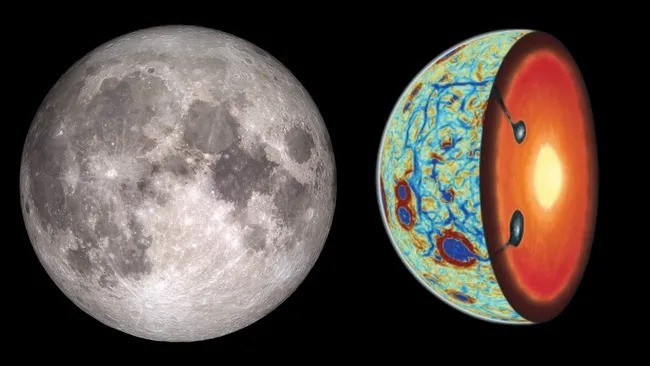NRGreport 6/4/2020 4:02
Not because the oxygen would be blue or because the ocean would reflect it. The answer lies more in physics, in short: sunlight is light of different wavelengthse , Earth’s atmosphereSinging molecules and our eyes need it too.
The part of the sun that we can see and observe is the atmosphere, the so-called Photosphere. 90% of the solar radiation that reaches our Earth is generated in this layer. Our photosphere is so hot, with a temperature of nearly 6000 K, or 5727 degrees Celsius, that it emits a wide spectrum of light, from violet to red and deep in the infrared range. – It turns out that a Medium.com from his report.
The light of the highest energy is also the light of the shorter wavelength (and higher frequency), while the light of lower energy has a longer wavelength (and lower frequency) than its higher energy counterparts. When we see a prism that splits sunlight into its individual components, the light is distributed due to Red light has a longer wavelength than blue light.
The fact that light of different wavelengths reacts differently to the interaction with matter is also very useful in our daily lives. A microwave oven allows visible light of short wavelength to go in and out, but keeps the longer wavelength light inside the microwave and reflects it back. The thin coating of sunglasses reflects ultraviolet, violet, and blue light, but allows for longer wavelengths of green, yellow, orange and red.
The tiny, invisible particles that make up our atmosphere — molecules like nitrogen, oxygen, water, carbon dioxide and argon atoms — scatter light at all wavelengths, but they scatter light with shorter wavelengths most efficiently.
Since all these particles are much smaller than the wavelength of the radiation itself, the shorter the wavelength of the radiation, the greater its scattering. In fact, it is subject to a phenomenon called Rayleigh scattering, which means that light is scattered over particles much smaller than a wavelength.
As sunlight falls everywhere on the day side of the Earth’s atmosphere, the red-wavelength radiation is 11% more likely to be scattered and reach our eyes as ultraviolet light.
Light is actually electromagnetic radiation perceptible to the human eye. (Of course, we should add that our heat detection can also detect electromagnetic radiation, but for now let’s keep our eyes peeled.)
We see the sky around the sun is blue. The farther you look from the Sun, the brighter blue it appears because we can see more of the atmosphere (and therefore more blue light) in those directions. Looking in both directions, we can see the scattered light from sunlight.
The color of the sky changes depending on where the sun is and where we look at it.
When the sun is below the horizon, the light must pass through a large amount of the atmosphere. The bluer light is scattered in all directions, the redder radiation is less scattered, that is, it reaches our eyes. If we sit on a plane after sunset or before sunrise, it can be quite amazing.
Judging by the photos returned by the astronauts, this scene is even more interesting.
At sunrise/sunset or moonrise/moonlight, the light of the sun (or moon) must pass through an enormous amount of the atmosphere; The closer to the horizon, the more atmospheres the light must pass through. While blue light is scattered in all directions, red light is scattered less efficiently. This means that both the light from the sun’s disk (or the moon’s disk) itself turns red, but the light from the sun and the moon’s ocean — light that only propagates once through the atmosphere before it reaches our eyes — prefers to be reddish.
in complete eclipse And when the moon’s shadow falls on us and prevents direct sunlight from reaching most of the atmosphere near us, the horizon turns red, but nowhere else.
The question may arise if light scattering of shorter wavelengths is taken into account more effectively, so why then does the sky not look purple?
In fact, there is actually more violet light coming from the atmosphere than blue, but other colors are also mixed. Since there are three types of staples (for color perception) in our eyes, along with monochromatic chopsticks, the four must interpret the signs of our brain when it needs to assign a colour.
Each cone, as well as chopsticks, are sensitive to light of different wavelengths, but to some extent each is stimulated by the sky. Our eyes react more strongly to blue, cyan, and green wavelengths than to ultraviolet light.. Although there is more ultraviolet light, it is not enough to overcome the strong blue signal emitted by our brain.
So the reason for the blue color of the sky is a combination of three simple factors: that sunlight consists of many different wavelengths of light, that the Earth’s atmosphere is made up of particles that scatter light of different wavelengths, and the sensitivity of our eyes. If we put these three things together, the sky would be blue for human perception.
Image source: unplash.











































